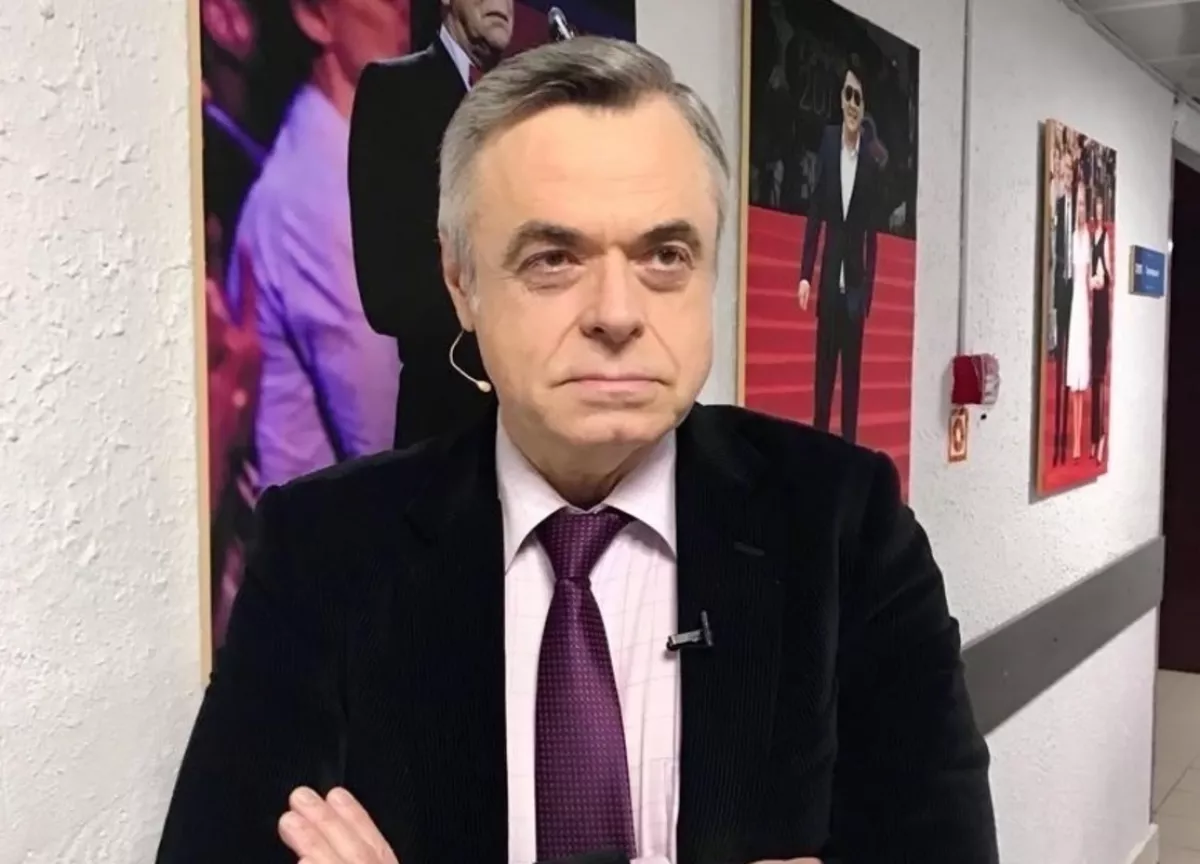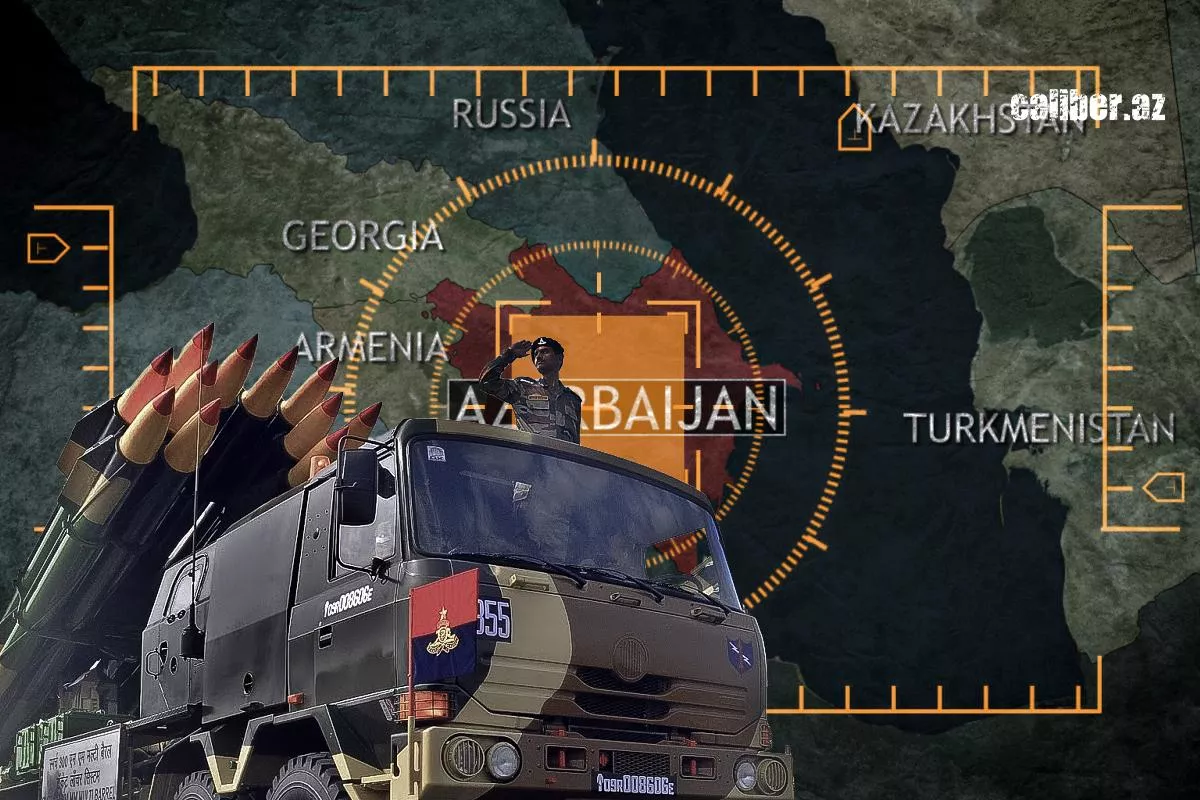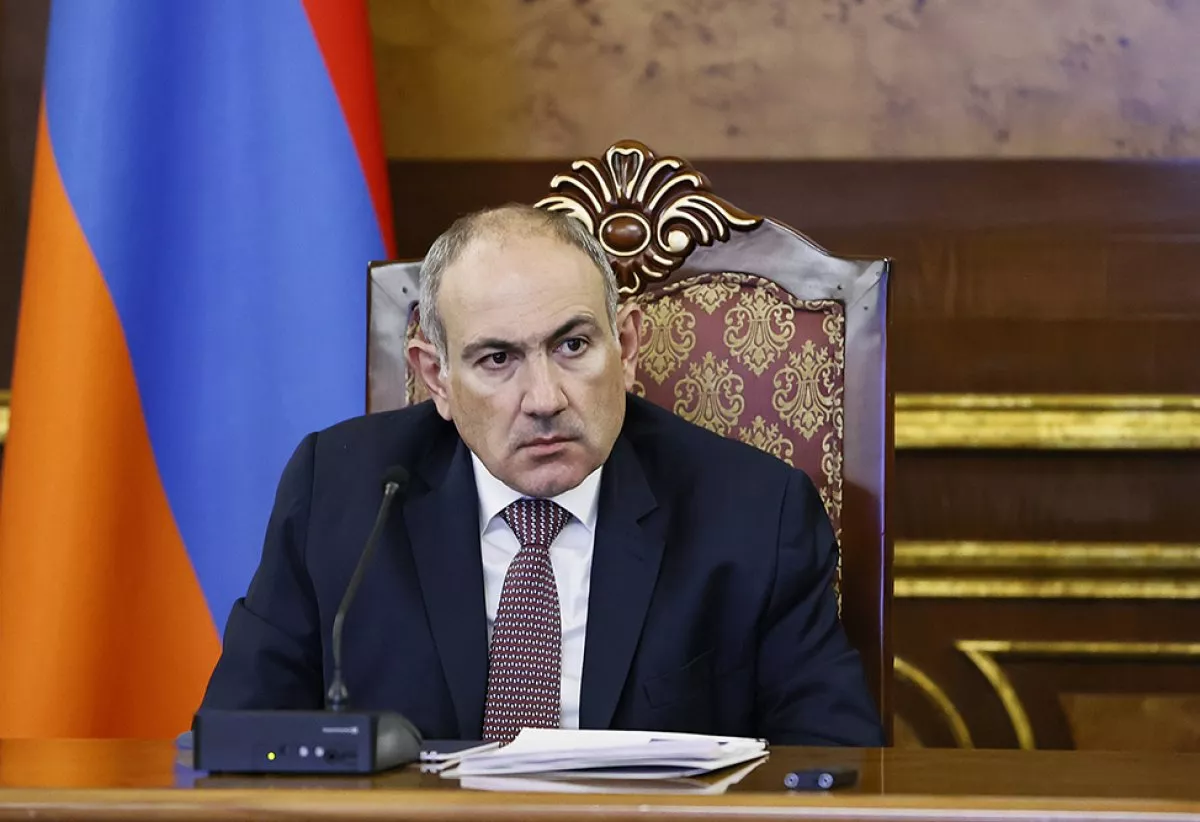India’s doomed bet in the South Caucasus Backing the wrong horse?
India’s growing military support for Armenia has raised eyebrows across the South Caucasus, risking its long-standing ties with Azerbaijan and threatening regional stability. In an exclusive interview, Russian journalist and Indologist Sergey Strokan breaks down India’s complex geopolitical game in the region — revealing why this risky bet could ultimately backfire on New Delhi’s broader ambitions.

— India is actively supplying arms to Armenia, and recently, several Indian companies and media figures have announced a boycott of Azerbaijan and Türkiye. In your view, what is behind this approach by India, which is recklessly undermining its relations with Azerbaijan and disrupting the fragile peace in the region?
— You know, when discussing New Delhi’s foreign policy in the post-Soviet space and across the vast expanse of Eurasia, we can quite rightly introduce the term “Azerbaijani anomaly” into the discourse. Let me explain what I mean. The point is that Delhi’s ambition to become the world’s fourth-largest economy as part of its “Developed India” strategy involves forging closer ties with existing and emerging centres of economic power across Greater Eurasia. This also implies strengthening its relations with the West. Within the Eurasian space, India is actively building relations with former Soviet republics and is working very closely with the Gulf states.
Indian Prime Minister Narendra Modi travels across the Gulf countries and can casually refer to the Emir of Qatar as a brother — despite essentially being a Hindu nationalist. Against this backdrop, with such forward-looking and warm relations with the post-Soviet states and Middle Eastern countries, India’s strained ties with Azerbaijan appear to be something of an anomaly. It seems unnatural and inconsistent with India’s own development strategy.
I see a contradiction here — especially considering that our two countries are connected through projects like the International North-South Transport Corridor, where, alongside Russia and Iran, both India and Azerbaijan serve as key operators.
There’s no need to explain to anyone what Azerbaijan represents — it is an energy and logistics hub, a country advancing in new technologies, and one that has publicly declared its ambitions to address global challenges at the upcoming COP29 climate summit in Baku.
Yet, one way or another, this anomaly persists — and a key part of it is India’s arms deliveries to Armenia. India, which for many years was itself a major purchaser of Russian weaponry, is now obsessed with the idea of becoming a global arms exporter. New Delhi is energetically pursuing a worldwide military export drive under its well-known “Made in India” strategy.
However, the Indian side somehow fails to take into account that such a course will inevitably lead to negative consequences in its relations with Azerbaijan. For some reason, Delhi seems to believe it can simultaneously arm Armenia — a country that, in reality, has not fully abandoned its revanchist ambitions — and at the same time, act as if nothing is wrong while remaining a partner within the North-South Corridor framework. Once again, I must stress: India’s position is fraught with serious costs.

The second question naturally arises: “Why is India so determined to arm Armenia?” A country that, to put it mildly, hardly fits into the vision of a strong, developed India — with a weak, isolated economy lacking resources and capabilities, unable to contribute meaningfully to the implementation of the “Made in India” programme, which aims to attract significant new investments. What major investors could possibly come from Armenia to India? Here we approach a more serious issue related to the South Asian region.
It becomes clear that India’s support for Armenia is part of a larger geopolitical narrative, which must be viewed through the prism of the rivalry between India and Pakistan — along with their respective partners and allies. The invisible barricades divide not only India and Pakistan but also the states willing to back one side or the other. This creates a very complex, multi-layered story — for example, the fact that Pakistan receives support from both China and Türkiye.
Just recently, the leaders of Türkiye and Pakistan — Prime Minister Sharif and President Erdoğan — met and agreed to cooperate in the fight against terrorism. However, India holds the view that all global terrorism originates from Pakistan, asking rhetorically: “How can one agree to fight terrorism with the world’s main terrorist?” This is India’s logic on the matter.
Naturally, all the countries on the other side of these geopolitical barricades — China, Pakistan, Türkiye, and Azerbaijan — represent states whose interests potentially conflict with India’s security strategy. Against this backdrop, it becomes possible to understand the source of India’s illogical yet persistent desire to arm Armenia. India’s logic is to support Armenia as a counterweight to Azerbaijan, creating a kind of conditional balance against Türkiye, Pakistan, and their allies. Simply put, anti-Pakistan sentiments in India have reached their peak.
And again, I must emphasise — in my view, India has clearly backed the wrong horse. This stance contradicts India’s own interests. Sitting on two chairs like this — having effective trade turnover with Azerbaijan on one hand, while on the other hand effectively boycotting Baku — I repeat, is fraught with consequences. India is clearly underestimating the fallout from such a policy. Simply put, this approach poisons Azerbaijani-Indian relations: years of trust between the countries are being undermined, which impacts the investment climate, expectations, prospects for cooperation, and so on.
— Don’t you think that the rapid armament of Armenia, encouraged by India and other countries, against the backdrop of frankly populist statements from Yerevan, indicates that Armenia is preparing for war?
— Absolutely, there is nothing positive in this trend. What exactly drives Armenia is hard for me to say, but I believe it’s a combination of factors. First, there’s the domestic political agenda. Although Pashinyan is, so to speak, moving towards peace and has already agreed on a peace treaty, it turns out he either cannot or does not want to amend the constitution. At the same time, there is still opposition fuelled by revanchist ideas and the notion of “Miatsum” (unification) — meaning “political detoxification” in Armenia has yet to take place.
I believe the essence is this: Armenia is arming itself because it does not want to appear as an easy target. But it is not buying weapons with the primary goal of actually going to war with Azerbaijan. No matter how many weapons it purchases from the French or the Indians, it’s clear that this will not allow Armenia to achieve any real military victory. If a calf starts butting heads with an oak tree, everyone knows what will happen.
I think Armenia wants to convert this military build-up into some form of political dividends, because weapons are not always acquired just to fight. For example, nuclear weapons are more of a deterrent or a tool for pressure than actual weapons of war.
So, I believe all this is mostly about having counter-leverage over Azerbaijan. I do not think Armenia would truly risk such a suicidal step again, as it did during the 44-day Karabakh war. The consequences of such actions could end very badly for Armenia.

It would seem that the Armenian side has done an enormous amount of work on the peace agreement — Yerevan has broadly agreed with Azerbaijan on all 17 points of the peace deal. Yet, everything has come to a halt over the constitution. That said, credit must be given to Pashinyan, who, in terms of advancing peace initiatives, has accomplished work that no previous Armenian leader managed to achieve.
The logic and arguments from Azerbaijan are clear and understandable: Baku does not want to leave room for new revanchist sentiments, a new “Miatsum.” But then, why is Pashinyan dragging his feet? To answer this question, we should consider what kind of leader he is and what kind of country Armenia is.
The fundamental difference between Pashinyan and President Aliyev is that Aliyev enjoys a huge reservoir of political resilience and popular support. He is a widely popular national leader — something that cannot be said about Pashinyan.
Because of this, Pashinyan’s actions are constrained by the need to constantly watch over certain segments of society, parts of the political class, his opponents in parliament, and factions within the elite who demand and dictate what constitutional changes must be made.
So, on one hand, he understands that reforms are necessary — but it seems his hands and feet are tied. There are many advisers and influencers around Pashinyan who tell him, “You’re going the wrong way,” or even accuse him of having “sold out Armenia.” As a result, Pashinyan moves forward at a snail’s pace, trying to please everyone, and how long this will last — or whether any real progress will be made at all — is difficult to say.
— Judging by the recent press conference of Russian Foreign Minister Sergey Lavrov in Yerevan and statements about restoring full-fledged relations with Moscow, it seems Armenia, having failed in the West, is ready to return to its former suzerain — Russia. Do you agree with this view?
— Last Friday, I was on the TV show 60 Minutes on Russia-1, where I proposed the term “Eurofail” or “Euroflop,” crude as it may sound. So, I would say this: Armenia’s European ambitions have hit a “Eurofail” from the European Union. Figuratively speaking, Armenia tried to “marry itself off,” but the groom either didn’t know or only vaguely suspected it.
The fact is that Europe is currently dominated by political short-timers and dwarfs who are incapable of pursuing policies aligned with the long-term interests of the Old Continent. The EU today resembles a box of expensive chocolate sweets rustling with empty wrappers inside. You open it and find not forty chocolates, but only three and a half: two are decent, one is bitten. That’s roughly what the EU looks like today.
Accordingly, with all its own problems, the European Union definitely did not need “the blessing” of Armenia.

And considering that Türkiye has been standing in the EU’s antechamber for already 30 years and is likely to remain there for as long again, it’s clear that no one — ever — will accept Armenia into the EU either.
So when Russia took a firm stance, saying you can’t keep sitting on two chairs, and the Armenian side realised that the European Union wasn’t really waiting for them, and that Macron was just a political loser, it became clear that they had to step back.
In short, hitting this “Eurofail,” Armenia understood it had rushed — like a spurned bride — puffing out its lips and making faces at Russia. Now comes the era of bitter awakening and an obvious choice.








